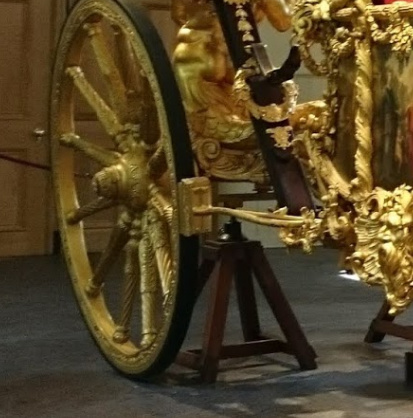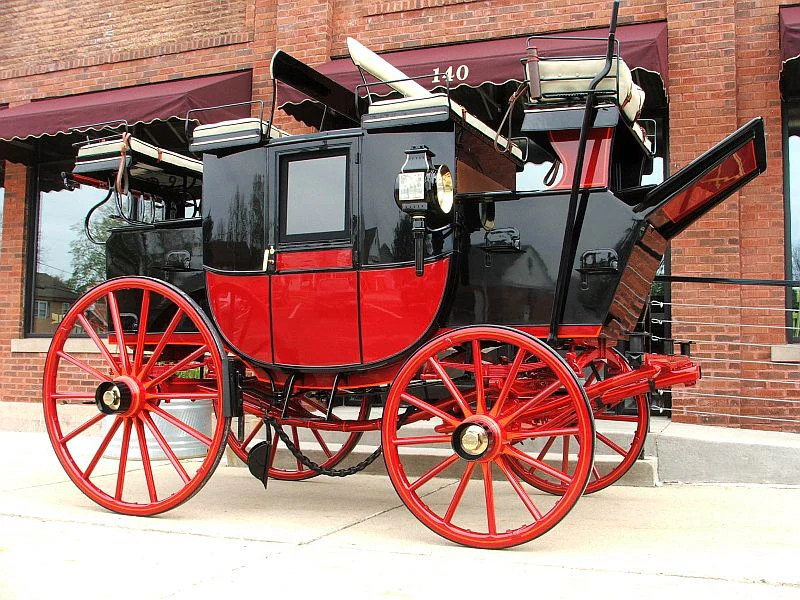Touch the Gold State Coach at your peril!! It is the most fantastic antique and an almost unique survival. So no, not going to be modernized. Imagine putting a new chassis on a vintage 1929 Rolls Royce Phantom 1.
The State Coach is very rarely used, precisely because it is such a status vehicle and is rather like a moving palace. The other two great State Coaches are that of the Lord Mayor (of London) and the Speaker of the House of Commons. They are all of a very similar age and are used in procession about once a year. The Royal Collection contains an amazing array of carriages, many of which are used daily. They are kept in the Royal Mews which are open to the public. It is well worth visiting, if ever in London.
Steel springs on vehicles weren’t invented until the end of the 18th century. They made carriages so much more comfortable that “driving” became a status sport. As an example, look at the George Stubb’s painting: The Prince of Wales’ Phaeton (sorry, you’ll have to Google because I don’t know how to add that link). Him tipping it over driving in the company of his mistress was the source of much mockery by his peers and in the press at the time. Royal scandals are another tradition.
The first monarch to have a “coach” was Elizabeth 1 and she really played up the status of such a modern, trendy vehicle. In a public procession she would have several coaches, one with her in and the rest empty, all fabulously decorated with jewels, silks, feathers and the horses with feathers, ribbons and dyed manes and tails. However, a coach suspended on leather straps, on Tudor roads, was so uncomfortable the Queen would only get in for a very short public period. Her Household Accounts show endless and fruitless attempts to improve comfort by e.g. padding the wheels with various materials such as feathers.
The Diamond Jubilee Coach takes full advantage of modern technology combined with traditional skills such as painting and gilding. Six horses instead of eight and I suspect two of those are show rather than draft.






